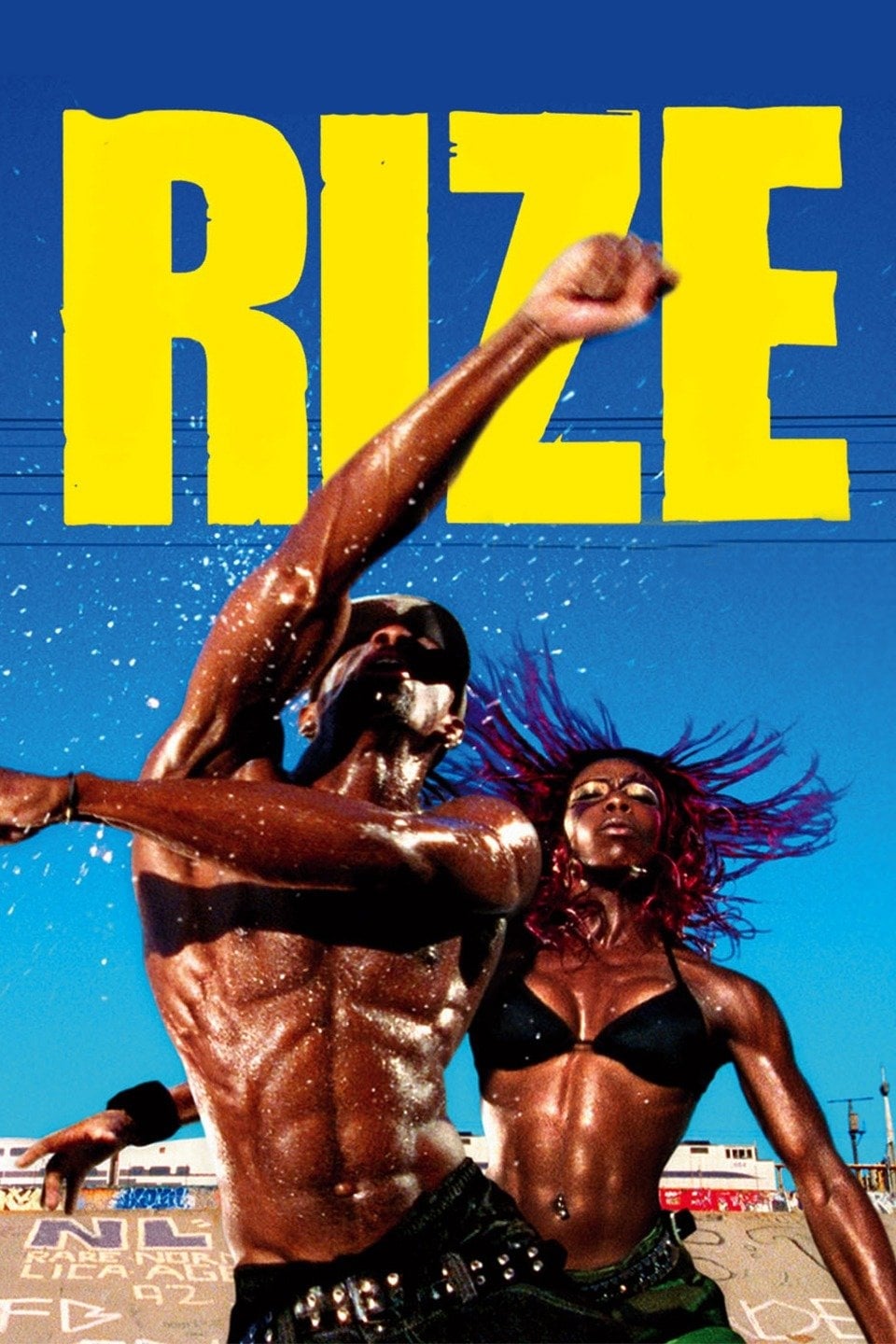
A documentary film that highlights two street derived dance styles, Clowning and Krumping, that came out of the low income neighborhoods of L.A.. Director David LaChapelle interviews each dance crew about how their unique dances evolved. A new and positive activity away from the drugs, guns, and gangs that ruled their neighborhood. A raw film about a growing sub-culture movements in America.
13 May Rize (2005)
Their Space, My Breath
I suppose there will be great numbers of viewers who will come away from this feeling good. The myth of the movie, pounded over and over, is that the art these kids devote themselves to elevates them, saves them. There are copious extra features on the disk where the same plodding testimony is given: these dancers are true and saved because of it.
I came away deeply disturbed. Deeply. Yes, of course I was impressed with the dancing. Well, not the dancing so much in most cases, but the sheer exuberance, energy and commitment these kids have. It’s genuine and no one can fail to be swept up. In fact, I have fallen in love with Miss Prissy. Of everyone you see, she’s the deepest; you can see her fearlessness, failure to protect herself. She’s Janis Joplin in body. She’s also not in any extras, those self-celebratory muggings that base a whole life on how each kid was once captured. She’s moved on, and good for her.
If you like dance, or you care for performance, or you celebrate openness, or you are simply interested in cultural discovery, you’ll be as entranced as I. So you will be similarly disturbed by the elements of this that contrast with this energy.
The main one is that this is a phenomenon that is wrapped around a myth, which happens to be the myth these kids have (partly) spun themselves. The entire complexity of their lives is given a simple shape that demeans them and insults us. They carefully explain things to the white guys from uptown with the camera in fairly articulate terms. Do you think they have that same story among themselves? Possibly they do in times of crises where they can reduce their life to the church or something similarly simple. But look at the dances; these are full, complex beings pretending to each other occasionally and us all the time that they are something simple.
There was a similar film, “Dogtown and the Z-Boys”, from a nearby area. It really was pure. It was made by one of the characters in the midst of the trend. The cinematic style was exactly the same as the radical stuff they were doing on the skateboards. It really was honest, not only in what it showed, but what it was. This, “Rize,” is only honest in what it shows, and because it is fabricated and assembled as a film in a sort of whitebread fashion, it makes us question much of what we see.
For instance, toward the end is the dance sequence that made me fall in love with Miss Prissy. A still from it is on the cover of the DVD. It isn’t a spontaneous gathering the camera happens upon, it is something carefully constructed for us. Oiled black bodies, splashed water flying in the sunlight. Engineered lighting. Camera placed low with a restricted frame, which means the dancers need to arrange themselves carefully for the effect. Prissy’s hair has clearly had some attention other than what we’ve seen before. The dance moves are terrific, hypnotising, but quite different than what we’ve seen before.
This is a show for the camera, designed, not found. The fact that it is what sticks in my mind is what is so disturbing. All that went before with Miss Prissy was to establish her genuiness so that I could appreciate her in this somewhat ungenuine scene. The realisation startles; it’s a bit like “The Gods Must be Crazy,” where the charm of the thing is seeing a simple bushman BE a simple bushman, until you learn that being in that film as a pretend version of himself drove him to suicide.
Though much of it is endearing, some of it is not good dance. Some of it is primitive belligerence, not much different than the gang culture that surrounds them. Some of the dance that seems good is so only because of the editing and the music – that music is ALWAYS added in during editing and is not what they actually danced to. So you hear and see something different than the random, uneven and grunting way it was.
The trick in these things is that you have to know who you are in the story, where you sit as viewer. I don’t like the way I’m placed by the filmmaker, as someone whose acceptance of their homegrown art makes them ‘rise’. And I’m not sure I like any of the other alternatives either. So it disturbs when I like what I see but the filmmaker hasn’t given me a place, or a way to make a place.
About the dance… I am not a dancer, a watcher instead. For me, dance is deep. Sex is a simple dance, and the fuller dance expands that to the way the body touches everything around it. Dance is how your skin touches the world, my world, the space I rub against.
Some dance is constructive, it shapes space and creates small, turbulent structures that we step into. Nuryeyev.
This is different. These kids grab space, they reach deep into it and swim it closer to them. They expand, their skin dissolving into a blur that partly overlaps the space I call my own. They invade, and it is welcome. Not all of it, but some is. That shared vision that is a movement that is the tingle of living that is the knowing of body.
Posted in 2006
Ted’s Evaluation — 3 of 3: Worth watching.


No Comments